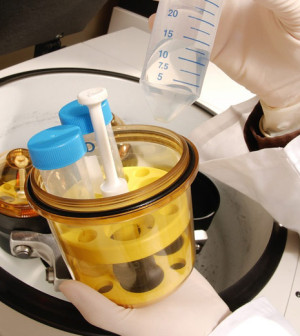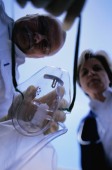- Double Mastectomy May Offer No Survival Benefit to Women With Breast Cancer
- Toxic Lead Found in Cinnamon Product, FDA Says
- Certain Abbott Blood Sugar Monitors May Give Incorrect Readings
- Athletes Can Expect High Ozone, Pollen Counts for Paris Olympics
- Fake Oxycontin Pills Widespread and Potentially Deadly: Report
- Shingles Vaccine Could Lower Dementia Risk
- Your Odds for Accidental Gun Death Rise Greatly in Certain States
- Kids From Poorer Families Less Likely to Survive Cancer
- Tough Workouts Won’t Trigger Cardiac Arrest in Folks With Long QT Syndrome
- At-Home Colon Cancer Test Can Save Lives
New Research May Help Spare Patients ‘Accidental Awareness’ During Surgery


WEDNESDAY, Oct. 23A new study offers insight into what happens in the brain when a person is given anesthesia, and the finding could help spare patients the traumatic experience of becoming aware of their own surgery.
The British researchers suspect they’ve found a type of brain activity that marks the point when patients truly go under, and are no longer conscious. If further research confirms that this is the point where people lose awareness, “it may change the way that anesthetics are delivered worldwide,” said study co-author Katie Warnaby, a research fellow at the University of Oxford in the United Kingdom.
At issue: Patients who aren’t fully anesthetized when they undergo an operation or who begin to regain consciousness before the surgery is finished. Physicians believe so-called “accidental awareness” is rare, with one survey of anesthesiologists suggesting that the rate of such cases is just one in 15,000 patients. But another estimate suggests 20,000 to 40,000 patients in the United States become aware while under anesthesia each year.
It’s important to understand that there are different levels of awareness, said Dr. Russell McAllister, an associate professor of anesthesiology at Texas A&M Health Science Center College of Medicine. “For a patient under light or deep sedation, it would not be uncommon to experience recall of certain events during the procedure. For a patient under general anesthesia, it is not a common event,” he said.
It’s clear, however, if accidental awareness can be horrific for patients who feel the intense pain of surgery but have no way to let anyone know in the operating room. Some of the patients report lasting emotional scars and even symptoms of post-traumatic stress disorder.
In the new study, researchers used EEG tests and functional MRI scans to study the brain activity of 16 patients who were given propofol, a commonly used anesthetic drug. “We were trying to pinpoint the changes that occur in the brain that lead to anesthetic-induced loss of consciousness,” Warnaby said.
The researchers focused on a certain type of brain waves known as low-frequency electrical waves, or slow waves.
“We found that if we focused on this slow wave frequency band, we saw that the amount of electrical brain power in this band reached a maximum level before the anesthetic dose had finished rising,” Warnaby said. “These slow waves started to increase when each individual became unresponsive and reached a maximum later in time.”
The findings suggest that EEG machines could be put to better use to monitor whether patients are in deep sleep, she explained.
The researchers suggest it’s fairly rare for anesthesiologists to use EEG machines to monitor patients under anesthesia, Warnaby said. “There isn’t much evidence that these current methods are that much better than traditional monitoring at reducing awareness during surgery,” she noted.
She said it’s possible that a system could be developed to better monitor awareness in patients that would be comparable in cost to current systems, and it could save money by delivering the right amount of anesthesia and preventing lawsuits after a patient becomes accidentally aware during surgery.
McAllister offers one caution. He said the new study is limited because it just looks at one kind of anesthesia when it’s common to give combinations of drugs to patients. For now, he said, “the best monitor for preventing awareness under anesthesia is an experienced and vigilant anesthesia provider. Additional monitors can provide useful information that can guide an anesthetic. However, the research regarding reliability of these monitors thus far have not indicated that they should be a standard of care.”
What’s next? The researchers believe they’ll see the same kind of brain activity in patients who are actually undergoing surgery, “but we will need to do further experiments to see how it can be affected by other drugs given during surgery, like painkillers,” Warnaby said.
The study appears in the Oct. 23 issue of Science Translational Medicine.
More information
For more about anesthesia, visit the U.S. National Library of Medicine.
Source: HealthDay
Copyright © 2024 HealthDay. All rights reserved.










